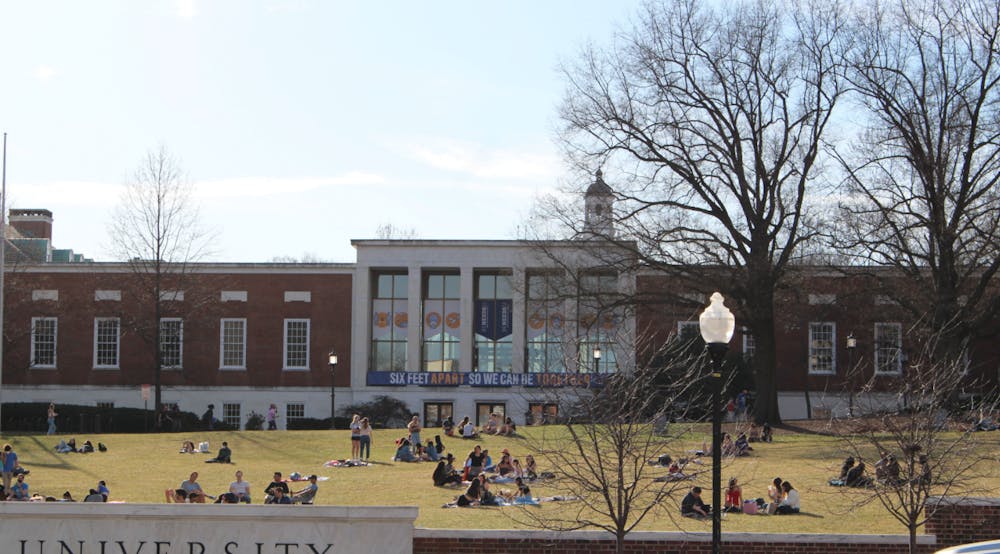In response to the pandemic, the University altered its spring break schedule to minimize traveling off campus. Instead of granting students an entire week off, the University scheduled five days without classes interspersed throughout the semester. So far, students have had two of their five spring break days and, although they have found ways to enjoy their days off, the move has raised concerns about mental health.
Junior Dmytro Nebesh, the president of the mental health and well-being organization Peabuddies, believes that the University did not do enough to ensure that students could rest on break days.
“We’re not really given time off. We’re just given time off from Zoom,” he said. “Especially at Peabody, there are rehearsals [and] lessons still scheduled. I have a separate job, and I thought on break day I would get a day off, and then I found out I [didn’t].”
Nebesh tried to plan fun activities for Peabuddies members over the days off but claimed that members were too overwhelmed with schoolwork to attend the events.
Freshman Rida Chowdhury explained that though she enjoyed her first spring break day, she still found it difficult to take a break from school.
“Because it was a three-day weekend, on that Monday I went with a few friends to the Appalachian Trail,” she said. “But it’s not like if you had a week off, you could relax for the first few days and catch up for the next few days. When you spend your one day off relaxing, you end up doing a lot more work the next day.”
Freshman Daivik Chawla also criticized the new structure, arguing that his classwork made it seem as if there was no break at all.
“It’s not enough to just give us one-day breaks in the middle of the semester, especially because we have assignments and homework due exactly the day after the spring break [day],” he said. “We end up spending that day working instead of actually resting.”
However, Chawla said it was nice to have a change from his normal routine in the new structure.
The city of Miami, a popular spring break destination, declared a state of emergency through April 11 because of its surge in large and unruly spring break crowds.
In an email to The News-Letter, Vice Provost for Student Health and Well-Being Kevin Shollenberger detailed the University’s decision-making process.
“We sought input through a wide range of groups and platforms, including several committees, deans and Town Halls,” he wrote. “Student groups weighed in on a number of options regarding the semester schedule. While consecutive break days were most preferred, the ultimate decision factored in both the risks and [Centers for Disease Control and Prevention] recommendations associated with non-essential travel.”
Chowdhury argued that even though the University made the decision to reduce student travel, the semester’s online format made it easy for students to still leave campus.
“Honestly, people are going to different places every week. Classes are still virtual so it’s easy to travel anyway,” she said. “I don’t know if what they were trying to prevent has really been prevented.”
Freshman Arijit Nukala felt that though the University tried to take mental health into consideration when making their decision, the result was ineffective. He believes multiple three-day weekends would have been better than having days off midweek.
Nukala, who is taking this semester from home in Michigan, also reported that he did not get an opportunity to take a break from school during the spring break days, adding that being off-campus made it hard to find things to do.
“Off-campus spring break days are definitely a little more gloomy than on-campus spring break days, just for the fact that you’re at home and you may not necessarily have friends to do stuff with,” he said.
Chawla suggested that even with the current structure, the University could have been more conscientious of students’ academic workload when restructuring spring break days.
“Even if they followed the same structure, it would have been helpful if they were a little more communicative with the faculty about expectations for how assignments should be scheduled around these spring break days,” he said.
According to Shollenberger, the University is planning on returning to a traditional spring break once travel becomes safer.
“We are optimistic about the increasing availability of COVID-19 vaccines and look forward to a time when we can return to a more traditional schedule,” he wrote.





